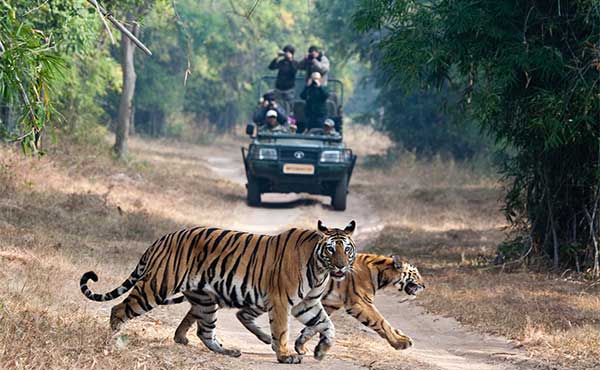Tigers in India – Best places to spot them and delve into the Habitat Diversity

Tigers in India – Best places to spot them and delve into the Habitat Diversity
Tigers in India are a crucial global population, representing over 70% of the world’s total. Designated as India’s National Animal in April 1973, Bengal Tigers (Panthera tigris tigris) dominate the country’s varied landscapes, excluding regions like the Thar desert and Ladakh.
India’s tiger population faces challenges from human interference and varying habitat quality. Despite this, nearly 30% of tigers reside outside designated reserves, indicating both challenges and opportunities for conservation.
India has exceeded its commitment to doubling tiger numbers ahead of schedule, balancing modernization with conservation efforts rooted in cultural and religious traditions that value coexistence with wildlife.
Tiger reserves enforce core areas free from human intervention, surrounded by buffer zones prioritizing conservation. These reserves vary greatly in size but are essential for breeding tiger populations. The landscape is diverse: India boasts a rich tapestry of tiger reserves, each offering unique opportunities to observe Bengal tigers in their natural habitats. Among the prominent reserves in North India, Jim Corbett National Park in Uttarakhand stands out as the oldest and most renowned. Spanning 520 square kilometers, it features varied terrain including hills, meadows, and a sizable lake, providing a habitat not just for tigers but also for rare species like fish-eating crocodiles. Ranthambore National Park in Rajasthan, once a hunting ground for Maharajas, is another prominent reserve known for its diurnal tiger population, enhancing chances of tiger sightings during the day. Moving to Central India, Bandhavgarh National Park in Madhya Pradesh offers a compact yet promising terrain with a high density of tigers, while Pench National Park, famous as the inspiration for The Jungle Book, continues to attract visitors with its diverse wildlife and stories of its famous tigress, Collarwali. Further east, Kaziranga National Park in Assam impresses with its high density of tigers amidst a backdrop of the Brahmaputra River and a diverse ecosystem that includes one-horned rhinoceroses and migratory birds. Each of these reserves not only preserves the majestic Bengal tiger but also contributes significantly to India’s conservation efforts and wildlife tourism appeal.
Key reserves include Jim Corbett National Park in Uttarakhand, known for its tiger sightings alongside elephants, leopards, and deer. Pilibhit Tiger Reserve in Uttar Pradesh boasts diverse ecosystems ideal for tigers and other wildlife.
Ranthambore National Park in Rajasthan offers extensive habitats around lakes, attracting a thriving tiger population. Bandhavgarh National Park in Madhya Pradesh is celebrated for dense tiger populations amidst diverse landscapes.
Kanha National Park, also in Madhya Pradesh, is renowned for organized safaris and picturesque tiger sightings. Tadoba Andhari Tiger Reserve in Maharashtra hosts notable tigers like Scarface, amidst diverse wildlife.
Panna National Park in Madhya Pradesh, despite past declines, showcases recovering tiger populations alongside leopards and sloth bears. Bandipur National Park in Karnataka facilitates tiger sightings in expansive forests.
Sundarbans National Park in West Bengal challenges visitors with dense mangrove vegetation but offers unique tiger encounters in a mangrove ecosystem. Pench National Park on the MP-Maharashtra border, famous from The Jungle Book, is rich in tiger sightings and diverse wildlife.
India’s commitment to tiger conservation is evident in its diverse reserves, combining habitat protection with cultural values to sustain Bengal Tigers across the country.







